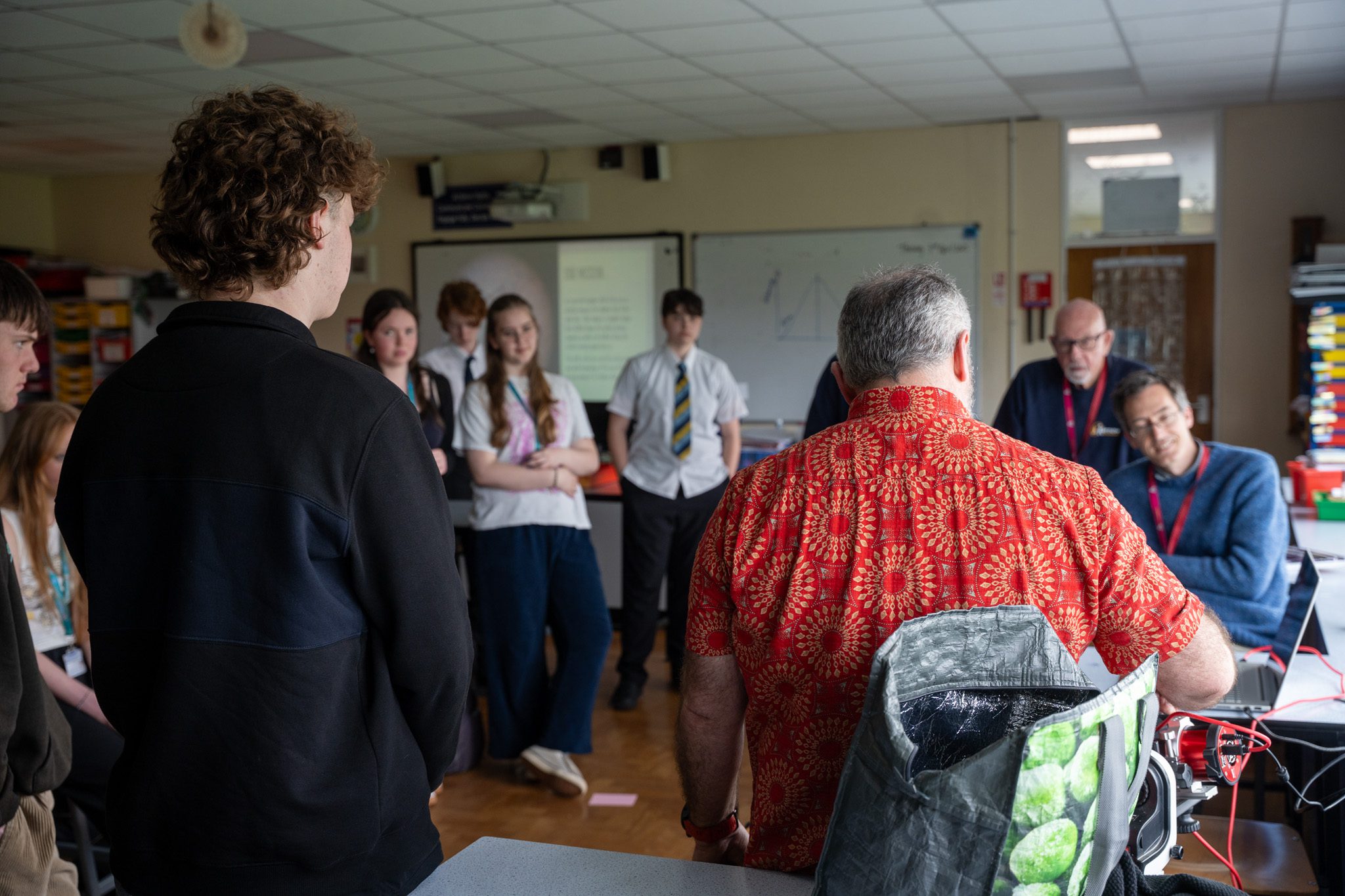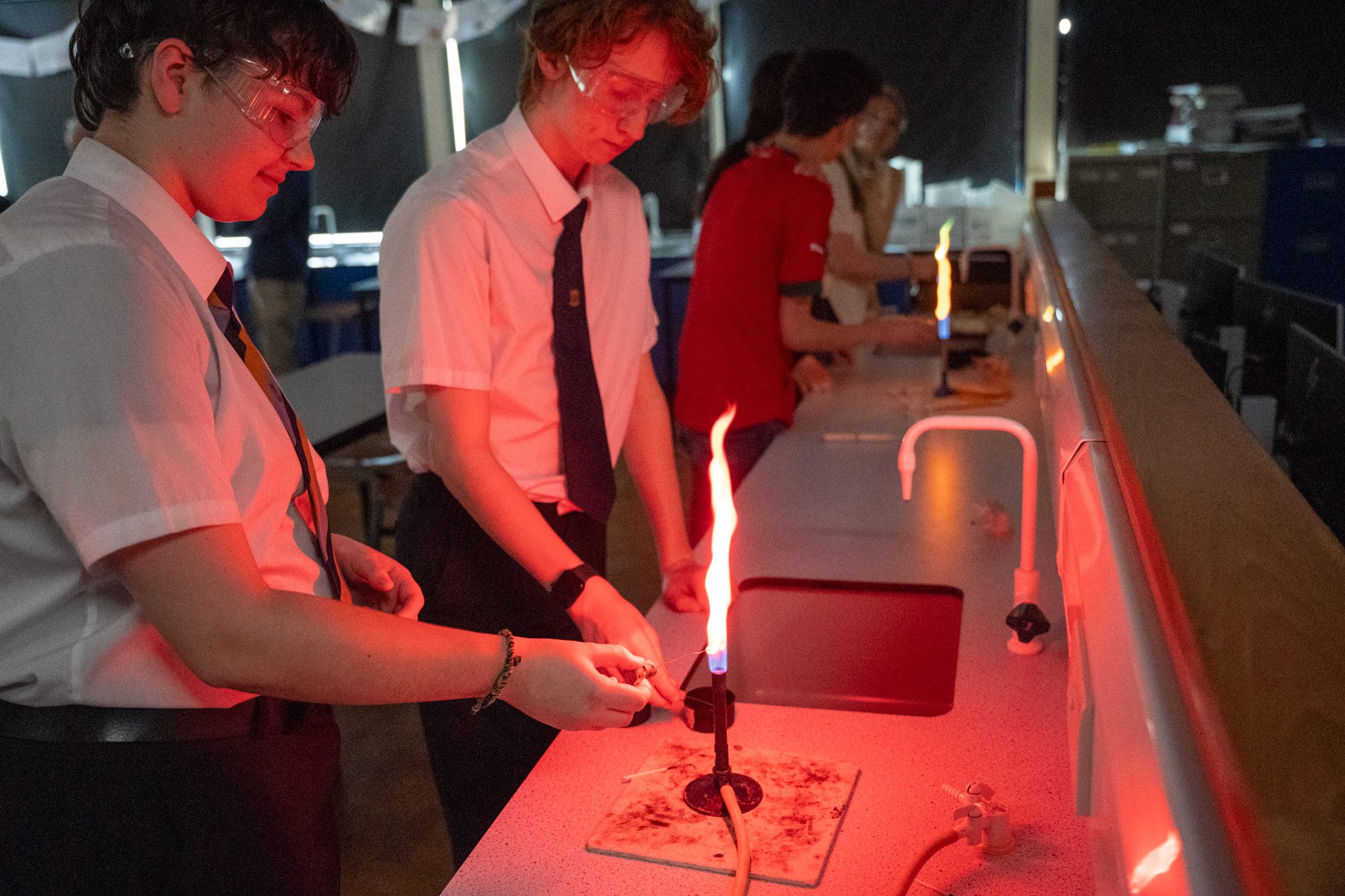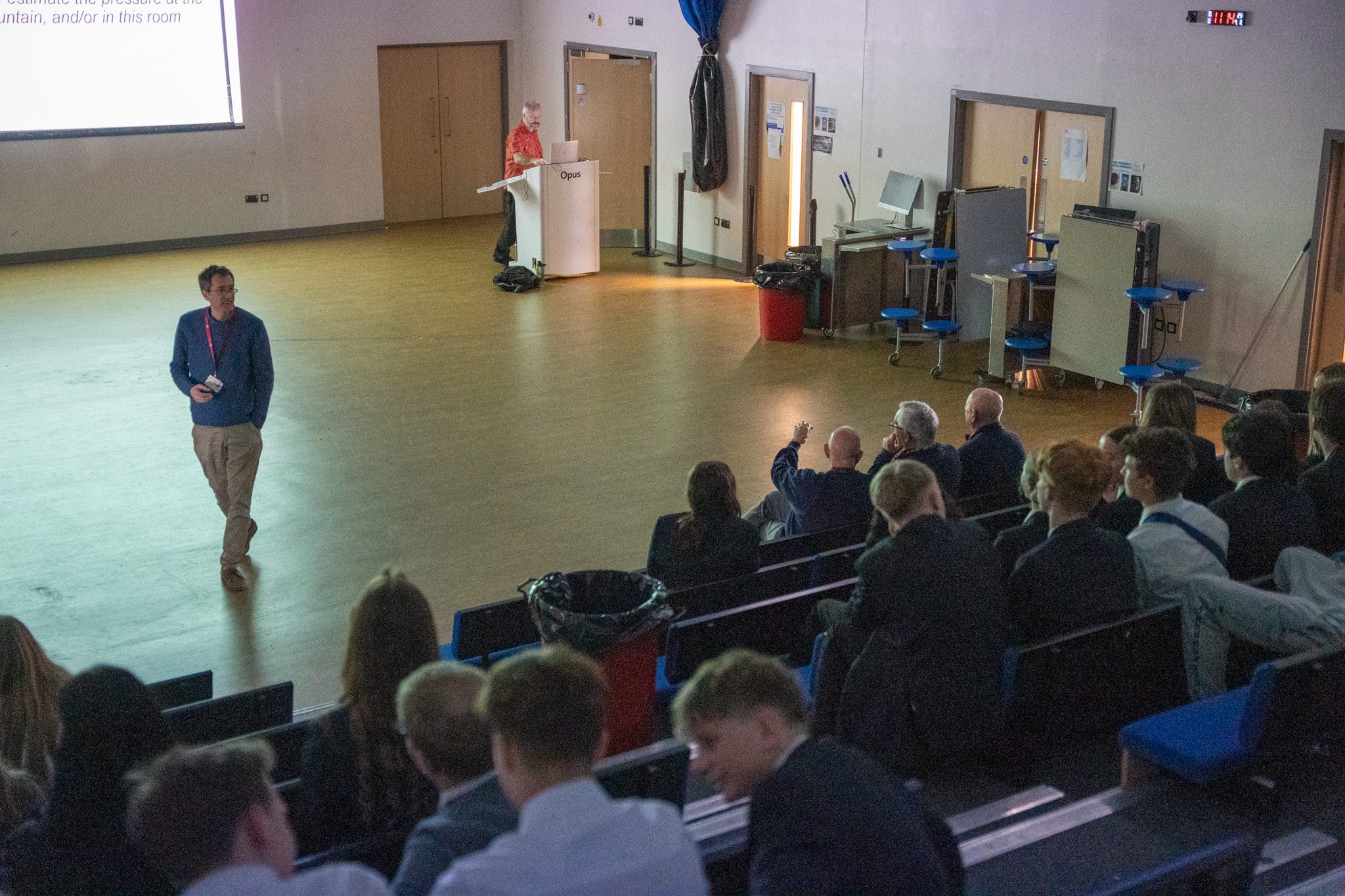Solar Eclipse Party 29th March
It’s been a busy week for astronomy at Newquay Tretherras. On Saturday 29th March from 10am until 12noon we had a solar eclipse party. The astronomers started arriving at 930am to set up their telescopes on the hardcourt at the top of school. There was a field of telescopes- well about 12 telescopes observing the solar eclipse in white light and narrow band (H-alpha a red wavelength at 656.28nm) to show the hydrogen clouds trapped in the magnetic fields on the surface of the sun. The sun is very active at the moment as it approaches solar maximum so it makes an excellent target.
The solar eclipse started with first contact just before 10am. You could clearly see a chunk missing from the sun as the moon passed in front from about 1005. The cloud gods were smiling down on us and the eclipse was visible until just before maximum contact at 1056.Overall well over 100 members of the public attended along with BBC spotlight. Many of these were students at the school or local primary schools. Each student was given a pair of eclipse glasses to stay sun safe (looking at the sun during an eclipse is especially dangerous for your eyesight). Interview were taken with staff and astronomers. Dr Price made the evening spotlight news on Saturday and Monday and the rumour is that we made Newsround as well which is exciting. The spotlight interviews can be found here (Link…)
Thank you to all the staff that supported especially Dr Stewart who got up early to direct the public. Thankyou to the Worshipful Company of Glassmakers of London who made possible the school’s Solar Telescope that saw action during the eclipse. Thank you to all the members of Kernow Astronomers who were so knowledgeable about their subject and for making the event a success. Dr Nigel Price
Professor Browning of Exeter University Visited Tretherras for the Royal Society Spectroheliograph Project on Thursday 3rd April.
Dr Price, who runs the school astronomy clubs, has secured grant funding to complete a project with the Royal Society and Exeter University Physics department. We have built a special telescope and imaging system called a spectroheliograph which will enable us to image/measure the rotation of the sun. As background The Royal Society is the oldest national science organisation in the world founded by Charles II in 1660 with such luminaries as Isaac Newton. This is a fantastic learning opportunity to understand the physics of the sun and how academic Physicists work. It also represents an amazing opportunity for students who are considering pursuing careers in any of the following fields: physics, engineering, computer science, maths, meteorology or astronomy to name a few.
Professor Browning already attended the school in December to launch the project and this Thursday he attended again to teach approximately 90 students about the evolution/lifecycle of stars. After a talk and a question and answer session in the hall the students went on to attend practical sessions completing flame tests and viewing the coloured spectrum of the sun emerging from the spectroheliograph.
Thankyou to Professor Browning for attending school for this project. Thanks again to Kernow Astronomers who also attended to hear the prof and help. Finally, thanks to all the science teachers and technicians who helped to make this event possible. These events really help the students to understand the work of academics and the impotance of the sun and its physics to our lives. It also looks great on a CV and could open up future opportunities for students to study and work in all those important STEM subjects.
The next event will happen in June when we will take the data and the images from the telescope and try to use it to measure the rotation of the sun.
Dr Nigel Price (Astronomy Lead Newquay Tretherras)





